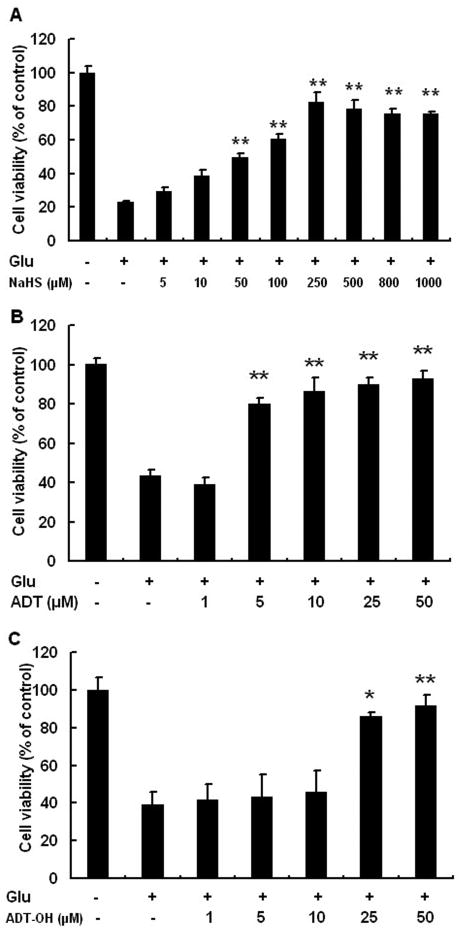Figure 1.
Slow-releasing organic hydrogen sulfide donors ADT and ADT-OH were more potent than the inorganic hydrogen sulfide donor NaHS in protecting HT22 neuronal cells from oxidative glutamate toxicity. A: NaHS conferred concentration-dependent neuroprotection in HT22 cells treated with glutamate and maximum protection was observed at 250 μM. B: The organic donor ADT increased HT22 cell survival following glutamate exposure and maximum protection was observed at 10 μM. C: The organic donor ADT-OH increased HT22 cell survival following glutamate exposure and maximum protection was observed at 50 μM. ** p<0.01 and * p<0.05 compared with HT22 cells treated with glutamate alone, n = 4 for each group.

